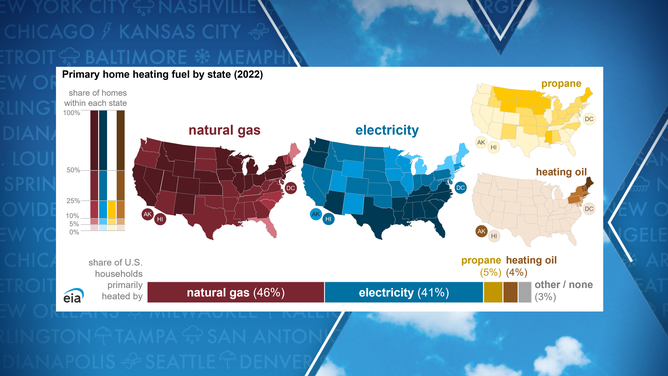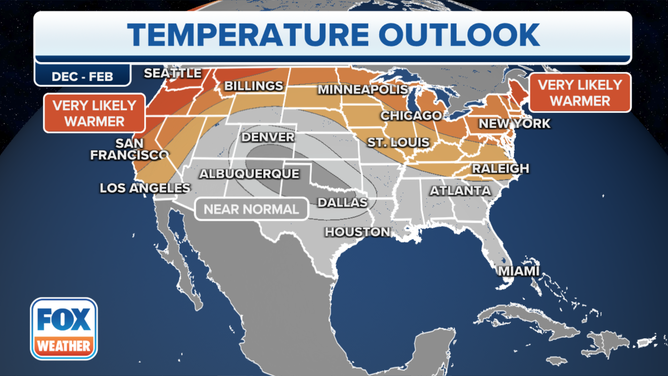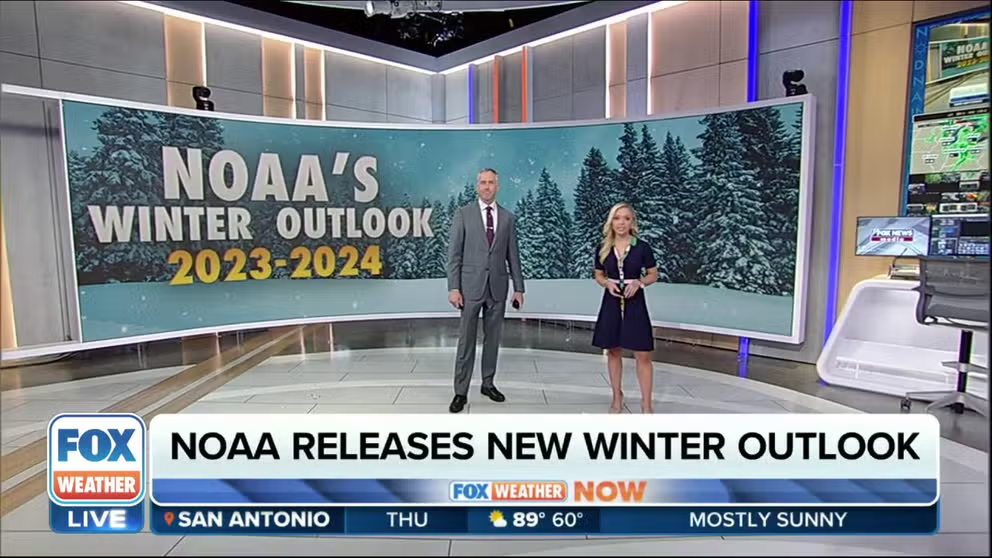Why US households will likely pay less for heating this winter
Natural gas is considered to be the main heating fuel in the country. The EIA says the share of homes that use electricity as a primary source has grown to 42% from 38% during the last decade.
NOAA's winter weather outlook released today
The NWS released the winter outlook which analyzes weather patterns like El Nino to forecast how it will fit into U.S. weather for the next three months. Jon Gottschalck of the Climate Prediction Center that authored the outlook explains.
The U.S. Energy Information Administration said this week that it expects home heating costs to come in significantly lower this winter than during the 2022-23 season as energy prices stabilize and warmer weather appears to ready take hold.
Based on initial estimates, homes heated by natural gas could see bills that are 21% lower than last winter, with declines expected to also impact users of electricity and propane.
Natural gas is considered to be the primary heating fuel across the country, while heating oil is mostly used in the colder climates of the Northeast and New England.
"Natural gas prices this year have been consistently lower than in 2022," EIA Administrator Joe DeCaroli, said in a statement. "Even if this winter is colder than forecast, we still expect households heated by natural gas to pay less for heat this winter."
WINTER OUTLOOK FOR US: EL NIÑO BOOSTS ODDS OF WARM WINTER FOR SOME, WET WINTER FOR OTHERS

U.S. residential heating sources
(U.S. Energy Information Administration / FOX Weather)
The agency said higher inventories, as well as an increase in energy production, will lead to reduced costs.
Home dependency on electricity during the winter has risen from 38% to 42% over the last decade, leading to a reduced dependence on fuels.
Residences in colder climates that solely rely on heating oil may see prices rise due to the commodity becoming more expensive.
According to EIA data, 4 million homes in the Northeast and New England rely on heating oil as the leading source of fuel.
The administration warned that a winter that misses expectations to the cold side could alter how much consumers save this winter.
NOAA recently released its seasonal outlook, showing that a majority of the Lower 48 can expect a warmer winter.
The highest chances of warmer-than-average temperatures are in the Pacific Northwest and New England, with above-average temperatures possible across large parts of the West, Midwest, Northeast and mid-Atlantic.

Winter Temperature Outlook
(FOX Weather)
